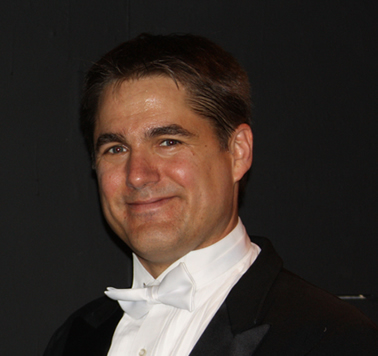How carefully do you listen to your surroundings while walking across campus? Or why do you choose to listen to your mp3 player instead? The Raleigh Civic Symphony, under the direction of Dr. Peter Askim, explored questions like these with the East Coast premiere of Richard Blackford‘s 2014 The Great Animal Orchestra Symphony. Also on the program was the world premiere of a piece for orchestra by Peter Askim. The performance took place in Stewart Theatre as part of the NC Science Festival.
Prompted to write a piece for the 2016 season, and inspired by the places he has called home, Askim wrote ” . . . the green earth new,” the title of this composition taken from the ee Cummings poem, “n(o)w…” Askim introduced the program by praising the orchestra members, who took on the daunting task of mastering a piece no one else has performed or recorded. The process must have called for trust and integrity, both by the conductor and musicians. The result was magical.
The single movement piece begins with shimmering dissonance that transported me like a sunrise over water and the awakening of species that inhabit the day. Short lyric motifs travel throughout the orchestra, as if messages are passed along. Copland-esque in places, the music grows in intensity. I imagined the sun as it continues to rise. Perhaps alluding to Smetana’s “Vltava” from Ma Vlast, Askim writes in his notes, “Like a stream flowing from its source to the sea, the music wanders with ever increasing movement.” His composition was lyric, evocative, and musically seductive. The orchestra played exceedingly well and with great heart; it was a fine performance. It’s a composition that deserves to be heard again and again.
The highlight of the afternoon program was Blackford’s The Great Animal Orchestra Symphony. Inspired by Dr. Bernie Krause‘s book The Great Animal Orchestra, Blackford initiated a conversation with Krause, and before long they agreed on a collaborative project – one that would marry the skills of a composer with the knowledge and expertise of Krause as an ecologist who recorded nature. The result was not only a fine composition but also the start of a friendship that will surely inspire listeners.
Blackford is a prominent composer from the U.K. who has written chamber and orchestral music as well as opera, and for the stage. However, it was his work in film and television that gave him the tools that enabled him to effectively work with Krause. Moreover, the composition grew out of Blackford’s personal education into the world of ecology. At the urging of Krause, Blackford not only listened to Krause’s field recordings or “soundscapes,” but he also traveled to the Borneo Rain Forest to listen for himself.
The symphony, in five movements, is written in the traditional symphonic form. The subtitles of each movement reflect the language of nature. For example, “Scherzo with Riffs,” is a charming reflection of the frog chorus. And the third movement, “Elegy,” was inspired by the mournful cry of the lone beaver. What makes this piece unique is the context in which these creatures live – the breeze, the insects and species we could not physically hear, but sensed their presence. This was the context Krause wanted Blackford to honor.
In writing the symphony, Blackford resisted the temptation to cut and paste, nor did he ask the orchestra to mimic the recorded samples. What I loved most, were the perfect elisions between the natural sound samples and the orchestra’s lyrical response – surely a challenge for the conductor. Askim adeptly led the players, who skillfully responded with great sensitivity. The percussionists worked particularly hard, rushing quietly from one end of the stage to the other to reach a vast number of instruments – a logistical problem not easily remedied. Winds emulated birds, matching pitches; and strings used every aspect of the bow to great effect. This symphony is not a remake of Saint-Saëns’ work for children, but for the children in us – to find the joy and sense of wonder.
As part of the science festival, a panel discussion took place after this performance in which the audience was invited to share in an experience that took some of them out of the laboratory. For others, it may have been simply a rare treat to hear live classical music.
Dr. Larry Nielsen, NCSU Professor of Natural Resources, served as moderator. Also on the panel were Blackford, Askim, Dr. Aaron S. Allen (musicologist, UNC-G), Dr. L. Scott Mills (NCSU Department of Forestry), and Dr. Caren Cooper (NC Museum of Natural Sciences). Cooper remarked that, following the concert experience, she felt like she had taken a walk in the woods. Mills noted that optimism will help meet the challenges of climate change – to do otherwise is to embrace defeat. We were invited to leave immediately; to go outdoors and listen. A twilight chorus was about to begin..
Click here to listen to excerpts from the symphony and a conversation with Askim and Blackford as they were guests on WUNC’s The State of Things (WUNC) with host Frank Stasio.











